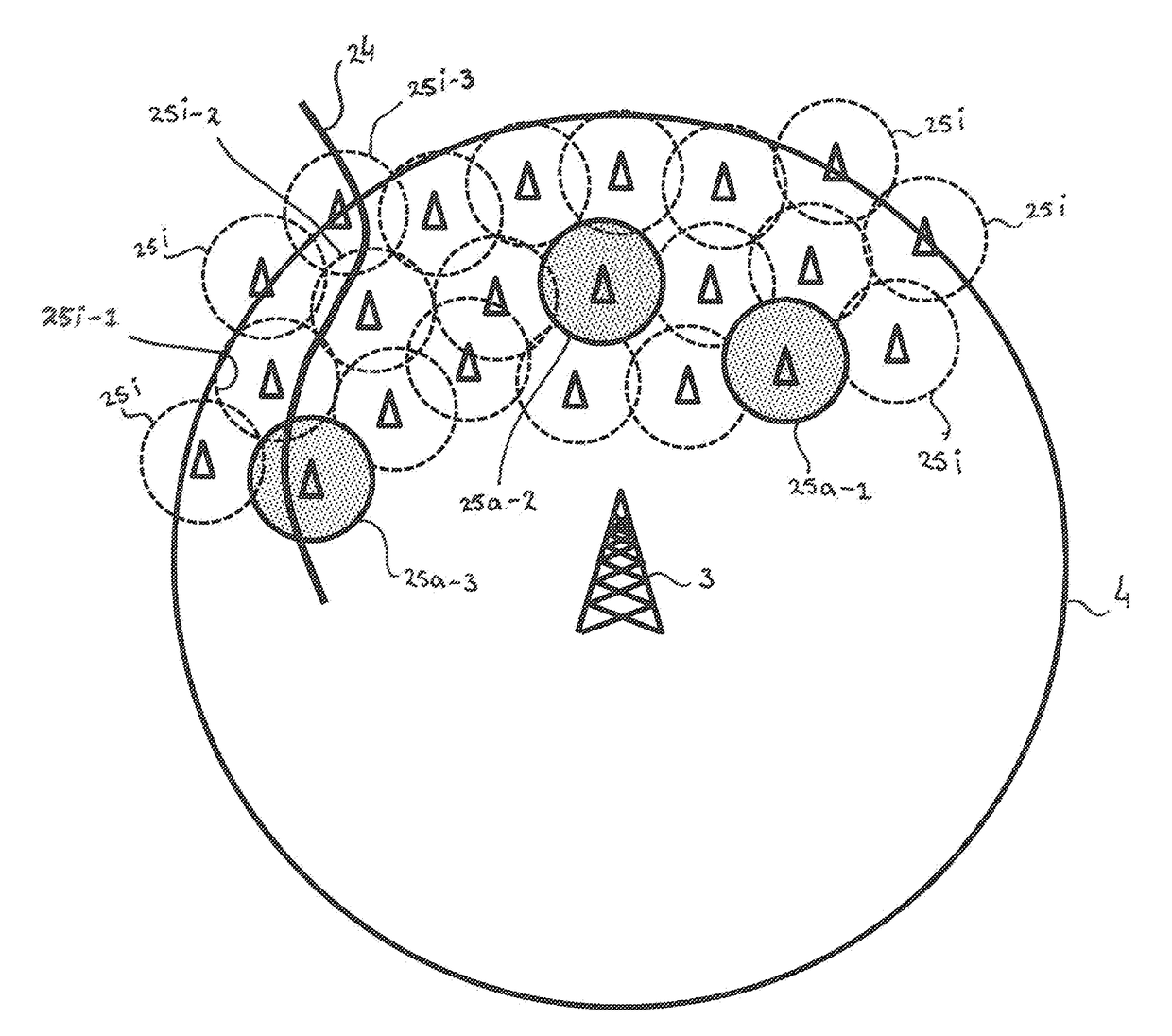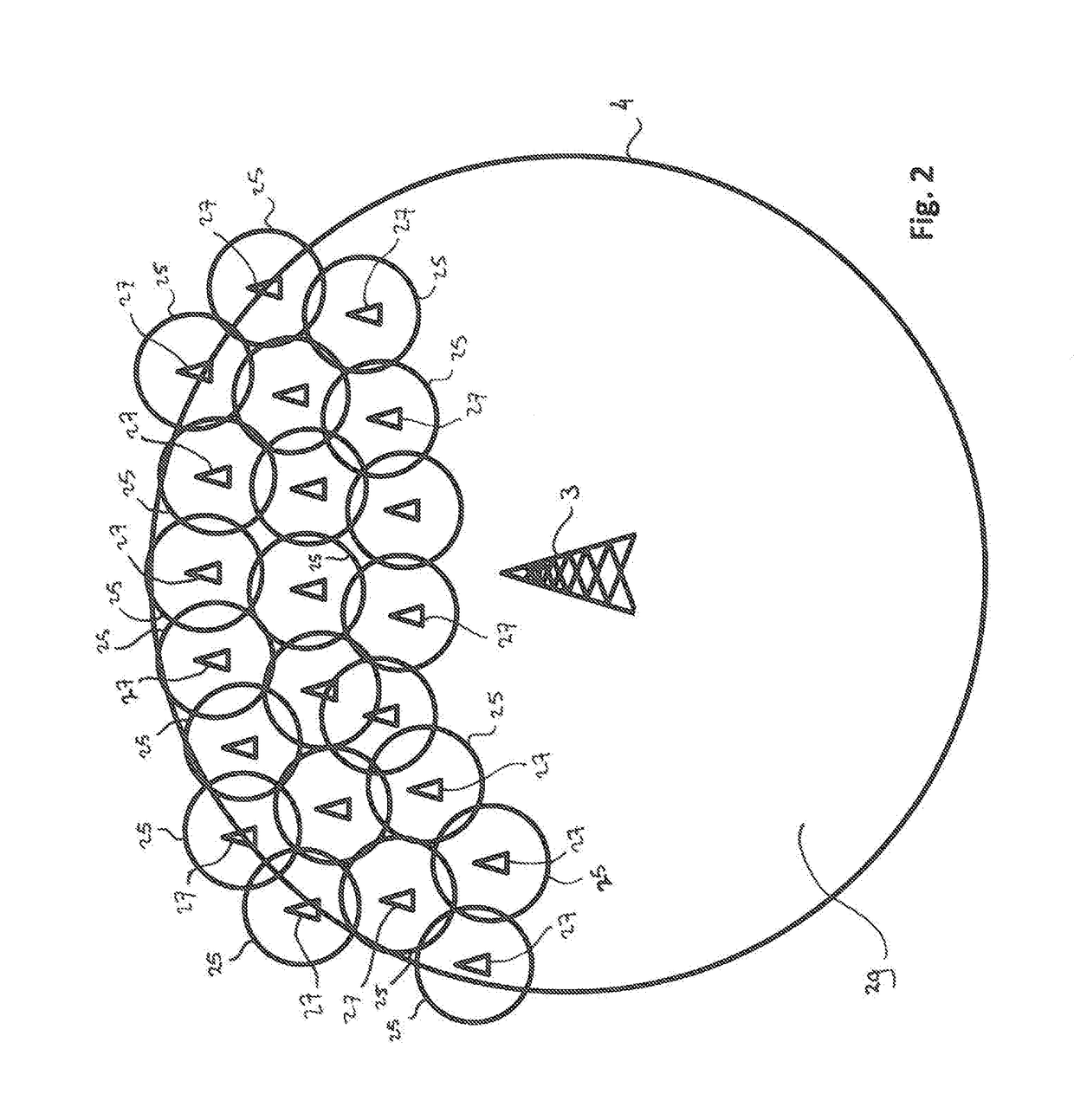Method Of, And Transceiver Station And Mobile Terminal For, Distributing System Information In A Cellular Telecommunications Network
- Summary
- Abstract
- Description
- Claims
- Application Information
AI Technical Summary
Benefits of technology
Problems solved by technology
Method used
Image
Examples
Embodiment Construction
[0029]FIG. 1 schematically illustrates an access network 1 in a beyond cellular green generation (BCG2) type network. The BCG2 network is a design of an energy efficient cellular wireless network as being recently developed in a field of mobile communication. The access network 1 consists of various transceiver stations providing signaling cells, of which in FIG. 1 only one signaling cell transceiver station 3 is shown to enable explaining the principles of operation. In reality, the BCL2 network may comprise many access points such as the one illustrated in FIG. 1.
[0030]The transceiver station 3 typically serves a coverage area 4. The area 4 will hereinafter be referred to as the S-cell 4. The term ‘S-cell’ refers to a signaling cell and indicates the main functionality of the S-cell 4. For example, the S-cell 4 may exchange signaling messages with mobile terminals 10 and 11 in the network.
[0031]A further type of cells is provided by the data cells or D-cells, such as data cells 5 ...
PUM
 Login to View More
Login to View More Abstract
Description
Claims
Application Information
 Login to View More
Login to View More - R&D
- Intellectual Property
- Life Sciences
- Materials
- Tech Scout
- Unparalleled Data Quality
- Higher Quality Content
- 60% Fewer Hallucinations
Browse by: Latest US Patents, China's latest patents, Technical Efficacy Thesaurus, Application Domain, Technology Topic, Popular Technical Reports.
© 2025 PatSnap. All rights reserved.Legal|Privacy policy|Modern Slavery Act Transparency Statement|Sitemap|About US| Contact US: help@patsnap.com



